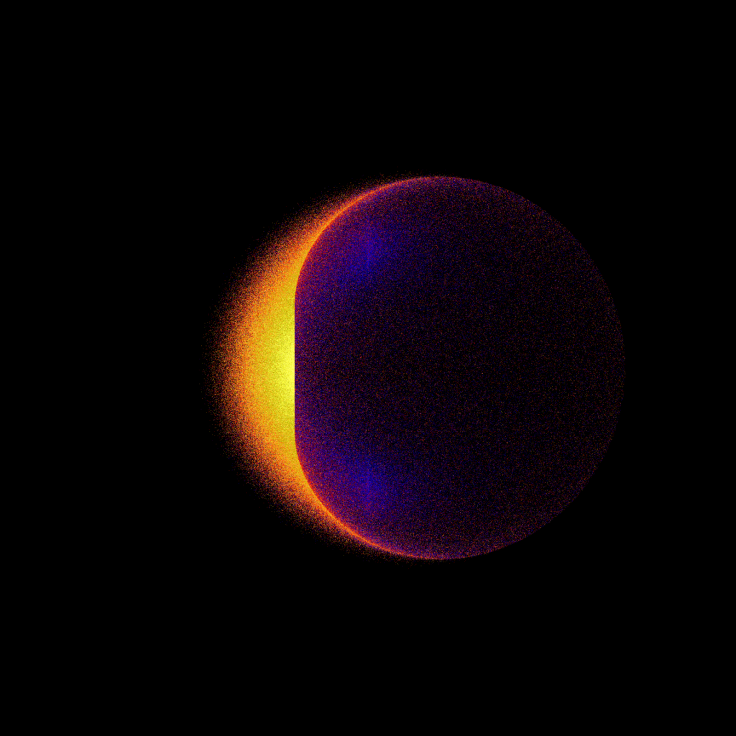Dark matter in black holes can produce gamma-ray light, Nasa simulation shows

Dark matter particles colliding in the gravity of black holes have the potential to produce observable gamma-ray light – providing a new avenue for scientists to explore the nature of them both.
A Nasa computer simulation that provided these results used Weakly Interacting Massive Particles, or Wimps, which are currently thought to be the leading candidate for what dark matter could be.
Wimps crashing into other Wimps mutually annihilated each other and convert into gamma-rays.
Published in The Astrophysical Journal, Nasa astrophysicist Jeremy Schnittman created the computer simulation that followed the orbits of hundreds of millions of dark matter particles and the gamma rays they produced when they collided inside the extreme gravity of black holes.
"While we don't yet know what dark matter is, we do know it interacts with the rest of the universe through gravity, which means it must accumulate around supermassive black holes," Schnittman said "A black hole not only naturally concentrates dark matter particles, its gravitational force amplifies the energy and number of collisions that may produce gamma rays."
Schnittman found that some gamma rays escaped with energies that far exceeded theoretical limits.
In recent years scientists have been looking at black holes as dark matter concentrators because Wimps can be forced together so much so that the rate and energies of collisions is increased.
Spinning black holes provide a natural laboratory more extreme than anything that could ever be created on Earth because of the flat region outside the event horizon – the ergosphere. In this space, the black hole's rotation drags space-time and everything else is pulled along at the speed of light.
The faster the spin, the bigger the ergosphere, meaning high-energy collisions can take place further from the event horizon – vastly improving the chance gamma rays could escape.
Schnittman's simulation tracked the positions and properties of hundreds of millions of particles as they collided and destroyed each other near a black hole. The model showed the processes that produce gamma rays with higher energies than ever thought possible.
Using these results, the astrophysicist simulated an image of the gamma-ray light as seen by a distant observer. The highest energy comes from the centre of a crescent shaped region to the side of the black hole.
Schnittman hopes one day to detect an annihilation signal from dark matter around a supermassive black hole: "The simulation tells us there is an astrophysically interesting signal we have the potential of detecting in the not too distant future, as gamma-ray telescopes improve.
"The next step is to create a framework where existing and future gamma-ray observations can be used to fine-tune both the particle physics and our models of black holes."
© Copyright IBTimes 2025. All rights reserved.






















